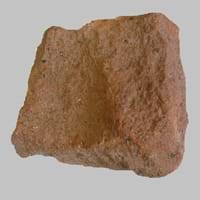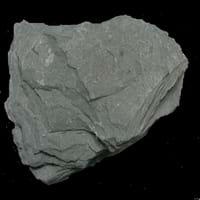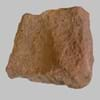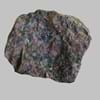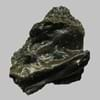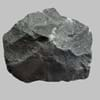Definition
Ignimbrite is a volcanic rock consisting mainly of pumice fragments, formed by the consolidation of material deposited by pyroclastic flows
Slate is a fine-grained, foliated, homogeneous metamorphic rock derived from an original shale-type sedimentary rock composed of clay or volcanic ash through low-grade regional metamorphism
Origin
New Zealand
England
Discoverer
Patrick Marshall
Unknown
Etymology
From Latin ignis fire + imber, imbr- shower of rain, storm cloud + -ite
From Old French esclate, from esclat (French éclat)
Class
Igneous Rocks
Metamorphic Rocks
Sub-Class
Durable Rock, Medium Hardness Rock
Durable Rock, Medium Hardness Rock
Group
Volcanic
Not Applicable
Other Categories
Fine Grained Rock, Opaque Rock
Fine Grained Rock, Opaque Rock
Texture
Aphanitic
Foliated
Color
Beige, Black, Brown, Grey, Pink, White
Black, Brown, Buff, Green, Light to Dark Grey, Purple, Red, Shades of Blue
Durability
Durable
Durable
Scratch Resistant
Yes
Yes
Appearance
Dull, Vesicular and Foilated
Dull
Interior Uses
Decorative Aggregates, Floor Tiles, Homes, Interior Decoration
Bathrooms, Decorative Aggregates, Entryways, Floor Tiles, Flooring, Homes, Hotels, Interior Decoration, Kitchens, Stair Treads
Exterior Uses
As Building Stone, Garden Decoration, Office Buildings, Paving Stone
As Building Stone, As Facing Stone, Garden Decoration, Paving Stone
Other Architectural Uses
Curbing
Curbing
Construction Industry
Building houses or walls, Construction Aggregate
As Dimension Stone
Medical Industry
Not Yet Used
Not Yet Used
Antiquity Uses
Artifacts, Monuments, Sculpture, Small Figurines
Artifacts, Monuments, Sculpture, Small Figurines
Commercial Uses
Cemetery Markers, Commemorative Tablets, Creating Artwork
Blackboards, Commemorative Tablets, Laboratory bench tops, Standard material for the bed of Billiard table, Standard material for the beds of Pool and Snooker table, Tombstones, Used in aquariums, Writing Slates
Types
Not Available
Not Available
Features
Always found as volcanic pipes over deep continental crust
Easily splits into thin plates, Surfaces are often shiny, Very fine grained rock
Archaeological Significance
Famous Monuments
Data Not Available
Data Not Available
Famous Sculptures
Data Not Available
Data Not Available
Formation
Ignimbrites are formed from very poorly sorted mixture of volcanic ash or tuff and pumice lapilli, commonly with scattered lithic fragments.
Slate is a low grade metamorphic rock that is generally formed by metamorphosis of mudstone or shale, under relatively low pressure and temperature conditions.
Mineral Content
Apatite, Biotite, Calcite, Chlorite, Feldspar, Hematite, Hornblade, Ilmenite, Magnetite, Olivine, Pyroxene, Quartz
Apatite, Biotite, Chlorite, Feldspar, Graphite, Hematite, Kaolinite, Magnetite, Pyrite, Tourmaline, Zircon
Compound Content
Ca, NaCl
Aluminium Oxide, CaO, Iron(III) Oxide, Potassium Oxide, MgO, Sodium Oxide, Silicon Dioxide, Titanium Dioxide
Types of Metamorphism
Burial Metamorphism, Contact Metamorphism, Hydrothermal Metamorphism, Impact Metamorphism, Regional Metamorphism
Burial Metamorphism, Cataclastic Metamorphism, Regional Metamorphism
Types of Weathering
Biological Weathering, Chemical Weathering
Biological Weathering, Chemical Weathering, Mechanical Weathering
Types of Erosion
Chemical Erosion, Coastal Erosion
Coastal Erosion, Glacier Erosion, Water Erosion, Wind Erosion
Grain Size
Fine Grained
Very fine-grained
Fracture
Uneven
Splintery
Streak
White
Light to dark brown
Porosity
Highly Porous
Less Porous
Luster
Vitreous to Dull
Dull
Cleavage
Not Available
Slaty
Toughness
Not Available
1.2
Specific Gravity
2.73
2.65-2.8
Transparency
Opaque
Opaque
Density
1-1.8 g/cm3
2.6-2.8 g/cm3
Resistance
Heat Resistant, Impact Resistant, Pressure Resistant, Wear Resistant
Heat Resistant, Impact Resistant, Pressure Resistant, Wear Resistant
Deposits in Eastern Continents
Asia
Afghanistan, Armenia, Azerbaijan, Burma, Cambodia, China, India, Indonesia, Iran, Japan, Malaysia, Mongolia, Nepal, North Korea, Pakistan, Saudi Arabia, Syria, Taiwan, Thailand, Turkey, Vietnam, Yemen
China, India, Turkey
Africa
Cameroon, Cape Verde, Chad, Djibouti, Eritrea, Ethiopia, Kenya, Libya, Madagascar, Nigeria, Rwanda, South Africa, Sudan, Tanzania, Uganda
Not Yet Found
Europe
France, Georgia, Germany, Greece, Iceland, Italy, Netherlands, Poland, Portugal, Spain, United Kingdom
Belgium, France, Germany, Italy, Norway, Portugal, Spain, United Kingdom
Others
Antarctica, Hawaii Islands
Arctic
Deposits in Western Continents
North America
Canada, Costa Rica, Panama, USA
USA
South America
Argentina, Bolivia, Brazil, Chile, Colombia, Ecuador
Brazil
Deposits in Oceania Continent
Australia
Central Australia, Western Australia
Not Yet Found
All about Ignimbrite and Slate Properties
Know all about Ignimbrite and Slate properties here. All properties of rocks are important as they define the type of rock and its application. Ignimbrite belongs to Igneous Rocks while Slate belongs to Metamorphic Rocks.Texture of Ignimbrite is Aphanitic whereas that of Slate is Foliated. Ignimbrite appears Dull, Vesicular and Foilated and Slate appears Dull. The luster of Ignimbrite is vitreous to dull while that of Slate is dull. Ignimbrite is available in beige, black, brown, grey, pink, white colors whereas Slate is available in black, brown, buff, green, light to dark grey, purple, red, shades of blue colors. The commercial uses of Ignimbrite are cemetery markers, commemorative tablets, creating artwork and that of Slate are blackboards, commemorative tablets, laboratory bench tops, standard material for the bed of billiard table, standard material for the beds of pool and snooker table, tombstones, used in aquariums, writing slates.
